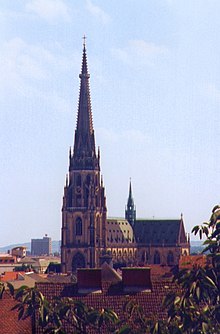
The Diocese of Passau is a Roman Catholic diocese in Germany that is a suffragan of the Archdiocese of Munich and Freising. The Prince-Bishopric of Passau was an ecclesiastical principality that existed for centuries until it was secularized in 1803. The diocese covers an area of 5,442 km².
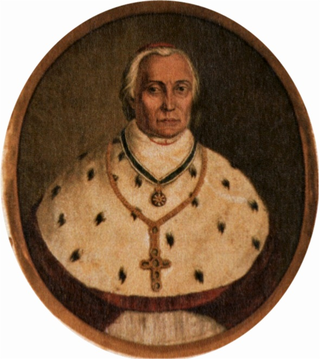
Gregorius Thomas Ziegler, bishop of Linz, was born at Kirchheim in Schwaben near Augsburg. He joined the Benedictines at Wiblingen Abbey in 1788 and was ordained priest on 25 May 1793. He taught in various Benedictine institutions until he became prior of Wiblingen.

Josephinism is a name given collectively to the domestic policies of Joseph II, Holy Roman Emperor (1765–1790). During the ten years in which Joseph was the sole ruler of the Habsburg monarchy (1780–1790), he attempted to legislate a series of drastic reforms to remodel Austria in the form of what liberals saw as an ideal Enlightened state. This provoked severe resistance from powerful forces within and outside his empire, but ensured that he would be remembered as an "enlightened ruler" by historians from then to the present day.

Diocese of Augsburg is a diocese of the Catholic Church in Germany. The diocese is a suffragan of the Archdiocese of Munich.
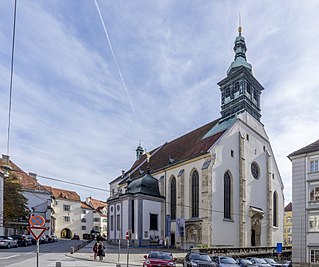
The Diocese of Graz-Seckau is a Latin Church diocese of the Catholic Church comprising the Austrian state of Styria. It is part of the Ecclesiastical Province of Salzburg.

The Diocese of Sankt Pölten is a Latin Church diocese located in the city of Sankt Pölten in the Ecclesiastical province of Wien in Austria.
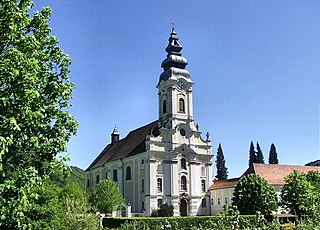
Engelszell Abbey was the last Trappist monastery, in Austria. It is located near Engelhartszell an der Donau in the Innviertel in Upper Austria.
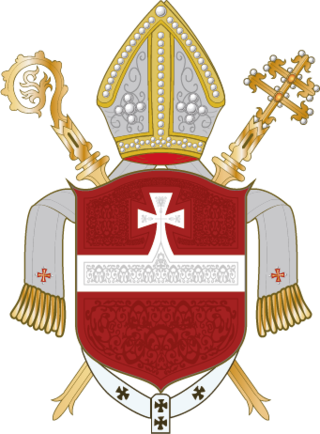
The Archdiocese of Vienna is a Latin Church archdiocese of the Catholic Church in Austria. It was erected as the Diocese of Vienna on 18 January 1469 out of the Diocese of Passau, and elevated to an archdiocese on 1 June 1722. The episcopal see is situated in the cathedral of S. Stephen in Vienna.

Leopold Ernst von Firmian was an Austrian bishop and cardinal.
Gerhard Maria Wagner is an Austrian Roman Catholic priest. He was appointed auxiliary bishop of Linz by Pope Benedict XVI on 31 January 2009, but amidst controversy over his views that sin caused Hurricane Katrina, Wagner turned the post down on 15 February 2009.

Franz Josef Rudigier was an Austrian Roman Catholic prelate and served as the Bishop of Linz from his appointment in 1853 until his death. Much of his local diocese grew due to his vigorous in promoting evangelic zeal and fundamental religious principles. His deep faith and will made him the intellectual figurehead of prelates in their struggle with liberalism.

Ernest Johann Nepomuk, Imperial Count von Herberstein, was the first bishop of the diocese of Linz from 1785 to 1788.

Josef Franz Anton Graf von Auersperg was an Austrian bishop, prince bishop of Passau and cardinal. He was a member of the House of Auersperg.
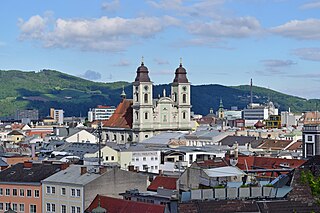
The Old Cathedral, also called the Church of Ignatius or the Jesuit Church, is a church in Linz, Austria. It was built between 1669 and 1683 in Baroque style. From 1785 to 1909 it served as cathedral of the Diocese of Linz.

Thomas Johann Nepomuk Kaspar, Count of Thun and Hohenstein was the 72nd Bishop of Passau.

Wenzeslaus of Thun was a Czech clergyman and bishop for the Roman Catholic Diocese of Passau.
The Anton Bruckner Prize is the main Culture Prize of the Province of Upper Austria for music. The prize, which is awarded by the Land of Upper Austria, is named after the composer Anton Bruckner, who was cathedral organist in Linz from 1855 to 1868. The award is endowed with 11,000 euros and is presented in a ceremony in Linz.

Schiedlberg Parish Church is the Roman Catholic parish church of the village of Schiedlberg in Upper Austria, dedicated to the Annunciation of the Blessed Virgin Mary. It belongs to the deanery of Steyr in the Diocese of Linz. The church is a protected historical monument.
